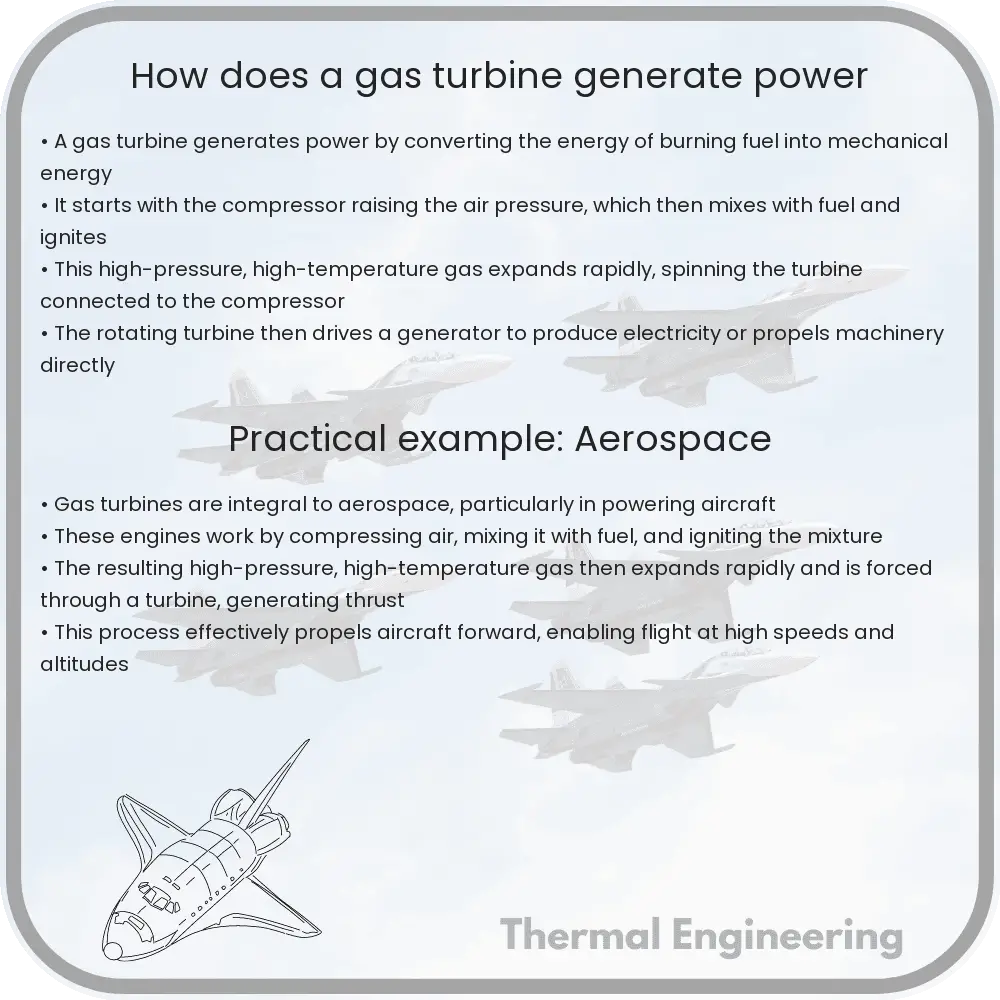Learn how a gas turbine uses natural gas or other fuels to produce mechanical and electrical power through combustion and the Brayton cycle.

Understanding How a Gas Turbine Generates Power
A gas turbine is a type of internal combustion engine that converts natural gas or other liquid fuels into mechanical energy. This energy then drives a generator that produces electrical power. Gas turbines are widely used in power plants, as well as in jet engines for aircraft. The basic operation involves three main components: the compressor, the combustor, and the turbine. Here’s how these components work together to produce power:
The Core Components of a Gas Turbine
- Compressor: The compressor is the first component in a gas turbine. Its primary function is to draw in air from the atmosphere and compress it. The compressed air is then heated and pressurized, which prepares it for combustion.
- Combustor: The high-pressure air from the compressor enters the combustor, where it is mixed with fuel. The mixture of air and fuel is then ignited. The combustion produces a high-temperature, high-pressure gas stream.
- Turbine: The hot gases from the combustor expand rapidly and pass through the turbine blades, making them rotate. This rotation drives the compressor and also generates mechanical power which can be used to drive an electric generator.
Energy Conversion in a Gas Turbine
In essence, a gas turbine transforms the chemical energy stored in the fuel into mechanical energy through the process of combustion. The mechanical energy is then converted into electrical energy by a generator. The efficiency of a gas turbine is significantly dependent on the temperatures and pressures that it operates at, and modern turbines are capable of reaching very high efficiencies by using advanced materials and sophisticated designs.
The Brayton Cycle: The Thermodynamic Cycle
The operation of a gas turbine can be described using the thermodynamic cycle known as the Brayton cycle. This cycle consists of four primary processes:
- Isentropic Compression: Air is drawn into the compressor where it is adiabatically compressed (no heat is added or removed).
- Constant Pressure Combustion: The compressed air then enters the combustion chamber, where fuel is injected and the mixture is burned at constant pressure, significantly increasing the temperature and volume of the air.
- Isentropic Expansion: The high-pressure, high-temperature gas expands through the turbine, performing work on the turbine blades as it does so. This process is also adiabatic.
- Pressure Drop Across the Exhaust: Finally, the exhaust gases are expelled through the exhaust duct at atmospheric pressure, completing the cycle.
The efficiency of the cycle improves with higher compression ratios and higher turbine inlet temperatures, but these are limited by the materials used in turbine construction.
Applications and Benefits
Gas turbines are exceedingly useful in a variety of applications. Not only are they critical in providing thrust for jet engines, but they are also essential in generating rotary power for different industrial purposes. In power generation, gas turbines are valued for their quick start-up times and scalability. They can be used for peaking power during high demand periods and are also effective in cogeneration (combined heat and power) setups due to their ability to produce both electrical and thermal energy simultaneously.
Conclusively, the gas turbine is a pivotal component in various engineering fields, showcasing an exemplary application of thermodynamic principles to generate power efficiently and reliably.